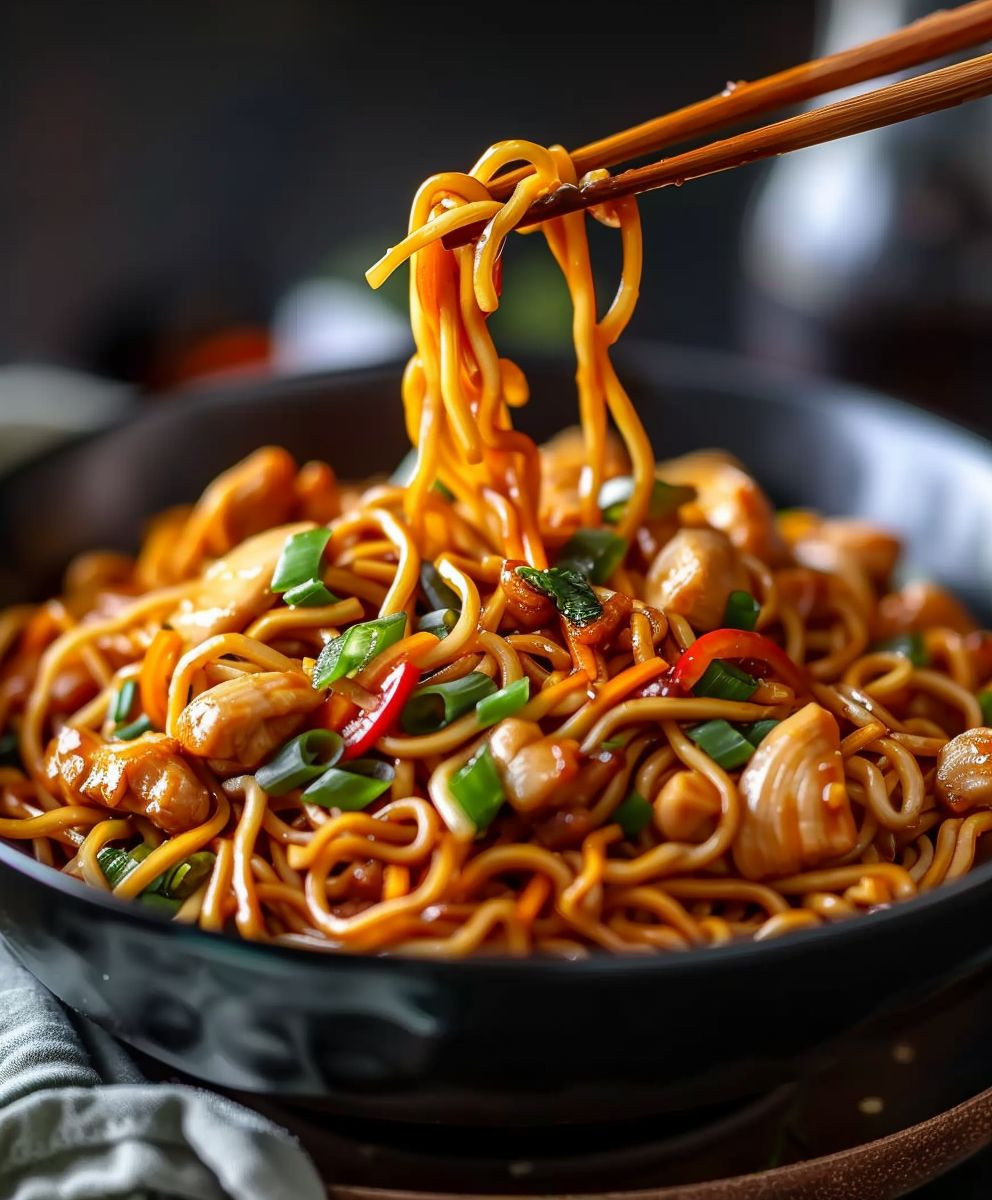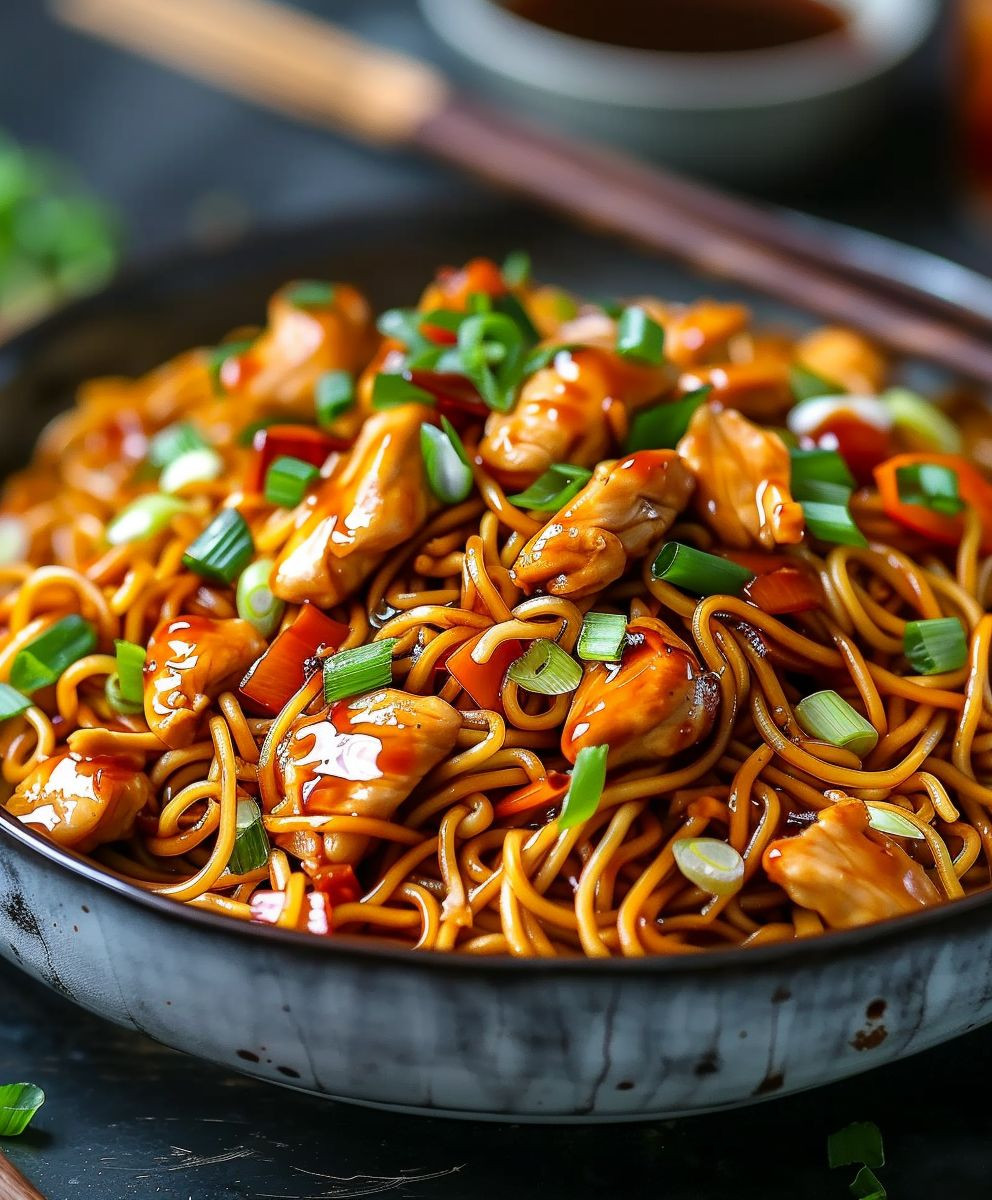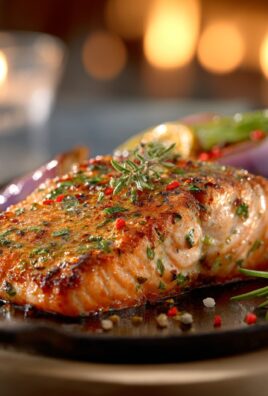Chicken Chow Mein, a dish that dances on your palate with savory flavors and satisfying textures, is more than just a quick weeknight meal; it’s a culinary journey that spans continents and generations. Have you ever wondered how this iconic stir-fry made its way from the bustling streets of China to become a beloved staple in homes around the world?
The story of Chow Mein is as rich and complex as its taste. Originating in Northern China, “Chow Mein” simply translates to “stir-fried noodles.” As Chinese immigrants ventured across the globe, they adapted their cuisine to local ingredients and tastes, giving rise to countless regional variations. This adaptability is precisely why Chicken Chow Mein has become such a global phenomenon.
What’s not to love? The combination of tender chicken, crisp-tender vegetables, and perfectly cooked noodles, all coated in a savory sauce, is simply irresistible. People adore this dish for its incredible flavor profile, its satisfyingly chewy texture, and its sheer convenience. Whether you’re craving a comforting classic or looking for a speedy and delicious dinner solution, Chicken Chow Mein is always a winning choice. So, let’s embark on a culinary adventure and create a Chicken Chow Mein that will tantalize your taste buds and leave you craving more!
Ingredients:
- For the Chicken Marinade:
- 1 pound boneless, skinless chicken breasts, cut into bite-sized pieces
- 1 tablespoon soy sauce
- 1 tablespoon cornstarch
- 1 teaspoon sesame oil
- 1/2 teaspoon ground ginger
- 1/4 teaspoon white pepper
- For the Chow Mein Noodles:
- 1 pound fresh or dried chow mein noodles (or substitute with spaghetti or linguine)
- 1 tablespoon vegetable oil
- For the Vegetables:
- 1 tablespoon vegetable oil
- 1 onion, thinly sliced
- 2 cloves garlic, minced
- 1 inch ginger, minced
- 1 cup sliced carrots
- 1 cup sliced celery
- 1 cup sliced bok choy (or napa cabbage)
- 1 cup snow peas, trimmed
- 1/2 cup sliced mushrooms
- 1/4 cup sliced water chestnuts (optional)
- 2 green onions, chopped, for garnish
- For the Chow Mein Sauce:
- 1/4 cup soy sauce
- 2 tablespoons oyster sauce (optional, but recommended)
- 1 tablespoon sesame oil
- 1 tablespoon cornstarch
- 1 tablespoon brown sugar
- 1/2 cup chicken broth
- 1 teaspoon rice vinegar
- 1/4 teaspoon white pepper
- Optional Garnishes:
- Sesame seeds
- Chili flakes
Marinating the Chicken:
- In a medium bowl, combine the chicken pieces with soy sauce, cornstarch, sesame oil, ground ginger, and white pepper.
- Mix well to ensure the chicken is evenly coated.
- Let the chicken marinate for at least 15 minutes, or up to 30 minutes in the refrigerator. This allows the flavors to penetrate the chicken and helps to tenderize it. I usually prep this first so it has time to sit while I get everything else ready.
Preparing the Chow Mein Noodles:
- If using fresh chow mein noodles, you may need to loosen them up before cooking. Follow the package instructions. Some fresh noodles can be added directly to the wok later.
- If using dried chow mein noodles, cook them according to the package directions until al dente. Be careful not to overcook them, as they will continue to cook in the wok.
- Drain the noodles well and toss them with 1 tablespoon of vegetable oil to prevent them from sticking together. Set aside. If you’re using spaghetti or linguine, cook them as you normally would, drain, and toss with oil.
Stir-Frying the Chicken and Vegetables:
- Heat 1 tablespoon of vegetable oil in a large wok or skillet over high heat. Make sure your wok is nice and hot before adding the chicken.
- Add the marinated chicken to the wok and stir-fry until it is cooked through and lightly browned. This usually takes about 5-7 minutes. Remove the chicken from the wok and set aside.
- Add another tablespoon of vegetable oil to the wok. Add the sliced onion and stir-fry for about 2 minutes, until softened.
- Add the minced garlic and ginger to the wok and stir-fry for about 30 seconds, until fragrant. Be careful not to burn the garlic.
- Add the sliced carrots and celery to the wok and stir-fry for about 3 minutes, until slightly softened.
- Add the bok choy (or napa cabbage), snow peas, mushrooms, and water chestnuts (if using) to the wok. Stir-fry for another 2-3 minutes, until the vegetables are tender-crisp. I like my vegetables to still have a little bite to them.
Making the Chow Mein Sauce:
- In a small bowl, whisk together the soy sauce, oyster sauce (if using), sesame oil, cornstarch, brown sugar, chicken broth, rice vinegar, and white pepper. Make sure the cornstarch is fully dissolved to avoid lumps in the sauce.
Combining Everything:
- Pour the chow mein sauce over the vegetables in the wok. Stir well to coat the vegetables evenly.
- Bring the sauce to a simmer and cook for about 1-2 minutes, until it thickens slightly. The cornstarch will help to thicken the sauce.
- Add the cooked chicken back to the wok and stir to combine with the vegetables and sauce.
- Add the cooked chow mein noodles to the wok. Toss everything together gently but thoroughly, ensuring that the noodles are coated with the sauce and mixed with the chicken and vegetables.
- Continue to stir-fry for another 1-2 minutes, until everything is heated through and well combined.
Serving:
- Remove the chow mein from the wok and transfer it to a serving platter or individual bowls.
- Garnish with chopped green onions, sesame seeds, and chili flakes (if desired).
- Serve immediately and enjoy! I love serving this with a side of egg rolls or spring rolls.
Tips for the Best Chicken Chow Mein:
- Use High Heat: Stir-frying requires high heat to cook the ingredients quickly and evenly. Make sure your wok or skillet is hot before adding the ingredients.
- Prepare Ingredients in Advance: Chop all the vegetables and prepare the sauce before you start cooking. This will make the stir-frying process much smoother.
- Don’t Overcrowd the Wok: If you are making a large batch of chow mein, it is best to cook it in batches to avoid overcrowding the wok. Overcrowding can lower the temperature and result in steamed, rather than stir-fried, ingredients.
- Adjust the Sauce to Your Taste: Feel free to adjust the amount of soy sauce, oyster sauce, and brown sugar in the sauce to suit your preferences.
- Add Other Vegetables: You can customize this recipe by adding other vegetables such as bell peppers, broccoli, or bean sprouts.
- Use Different Proteins: If you don’t want to use chicken, you can substitute it with shrimp, beef, pork, or tofu.
- Fresh Noodles are Best: While dried noodles work, fresh chow mein noodles will give you the best texture and flavor. Look for them in the refrigerated section of your Asian grocery store.
Variations:
- Shrimp Chow Mein: Substitute the chicken with 1 pound of peeled and deveined shrimp. Marinate the shrimp in the same marinade as the chicken.
- Beef Chow Mein: Substitute the chicken with 1 pound of thinly sliced beef. Marinate the beef in the same marinade as the chicken.
- Pork Chow Mein: Substitute the chicken with 1 pound of thinly sliced pork. Marinate the pork in the same marinade as the chicken.
- Vegetarian Chow Mein: Omit the chicken and add 1 block of firm tofu, pressed and cubed. You can also add more vegetables to make it a heartier vegetarian dish. Make sure to use a vegetarian oyster sauce substitute or omit it entirely.
- Spicy Chow Mein: Add 1-2 teaspoons of chili garlic sauce or sriracha to the sauce for a spicy kick.
Storing and Reheating:
- Storing: Store leftover chow mein in an airtight container in the refrigerator for up to 3-4 days.
- Reheating: Reheat the chow mein in a wok or skillet over medium heat, stirring occasionally, until heated through. You can also reheat it in the microwave. Add a splash of water or chicken broth if the noodles seem dry.

Conclusion:
This isn’t just another recipe; it’s your new go-to for a satisfying and flavorful weeknight meal. I’ve poured my heart into perfecting this Chicken Chow Mein, and I genuinely believe you’ll taste the difference. From the perfectly cooked noodles to the tender chicken and vibrant vegetables, every element works in harmony to create a dish that’s both comforting and exciting. It’s quick enough for a busy evening, impressive enough for company, and, most importantly, delicious enough to make you want to make it again and again.
But what truly sets this recipe apart is its versatility. Feel free to adapt it to your own tastes and preferences. Craving a little extra heat? Add a pinch of red pepper flakes or a dash of sriracha to the sauce. Prefer shrimp or tofu over chicken? Go for it! The beauty of Chicken Chow Mein lies in its adaptability. You can easily swap out the vegetables for whatever you have on hand – broccoli, bell peppers, snap peas, or even shredded carrots would all be fantastic additions.
And speaking of serving suggestions, the possibilities are endless! For a complete meal, serve it alongside some crispy spring rolls or a light and refreshing cucumber salad. If you’re feeling adventurous, try topping it with some toasted sesame seeds or chopped peanuts for added texture and flavor. Leftovers (if you have any!) are just as delicious the next day, making it perfect for lunch or a quick snack. You can even pack it in a thermos for a satisfying and portable meal on the go.
I’ve also found that this recipe is a huge hit with kids. The slightly sweet and savory sauce is incredibly appealing to even the pickiest eaters, and the colorful vegetables make it visually enticing. To make it even more kid-friendly, you can cut the chicken and vegetables into smaller pieces and serve it with a side of steamed rice.
But honestly, the best way to experience the magic of this Chicken Chow Mein is to simply try it for yourself. Don’t be intimidated by the ingredient list or the instructions – I’ve broken everything down into easy-to-follow steps, and I’m confident that you’ll be able to create a restaurant-quality dish in your own kitchen.
So, what are you waiting for? Gather your ingredients, put on your apron, and get ready to embark on a culinary adventure. I promise you won’t be disappointed. And once you’ve tried it, I’d love to hear about your experience! Share your photos, your variations, and your thoughts in the comments below. Did you add any special ingredients? Did you make any substitutions? Did your family love it as much as mine does?
I’m always eager to learn from my readers and to see how you’ve made this recipe your own. Your feedback is invaluable, and it helps me to continue creating recipes that are both delicious and accessible. So, don’t be shy – let me know what you think! Happy cooking, and I hope you enjoy this Chicken Chow Mein as much as I do! I truly believe this will become a staple in your recipe collection.
Chicken Chow Mein: The Ultimate Guide to Making It at Home
Quick and easy Chicken Chow Mein made with tender chicken, stir-fried vegetables, and flavorful noodles tossed in a savory sauce. A perfect weeknight meal!
Ingredients
Instructions
Recipe Notes
- Use high heat for stir-frying.
- Prepare all ingredients in advance.
- Don’t overcrowd the wok; cook in batches if necessary.
- Adjust the sauce to your taste.
- Feel free to add other vegetables like bell peppers, broccoli, or bean sprouts.
- Substitute chicken with shrimp, beef, pork, or tofu.
- Fresh chow mein noodles are recommended for the best texture and flavor.
- Store leftovers in an airtight container in the refrigerator for up to 3-4 days.
- Reheat in a wok, skillet, or microwave. Add a splash of water or chicken broth if the noodles seem dry.




